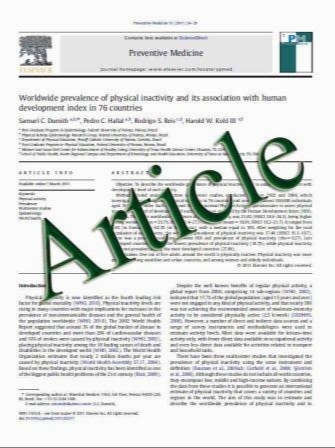Fasting glucose cutoff point: where does the risk terminate? Tehran lipid and glucose study
- نوع فایل : کتاب
- زبان : انگلیسی
- مؤلف : Mohammadreza Bozorgmanesh Farzad Hadaegh Navid Saadat Fereidoun Aziz
- چاپ و سال / کشور: 2011
Description
The aim of this study is to determine safe fasting plasma glucose (FPG) levels. We included data on 5,960 individuals aged C20 years at baseline with at least one follow-up examination. Diabetes was ascertained in accordance with American Diabetes Association criteria, using standard 2-h post-challenge plasma glucose test. Multivariate restricted cubic splines Weibull regression was implemented for interval-censored survival data on incident diabetes. We used Harrell’s C statistic for discrimination, Nam-D’Agostino v2 for calibration, and Royston’s R2 for variations in the outcome explained by models. During a 6-year median follow-up, 369 incident cases of diabetes were ascertained. Family history of diabetes, systolic blood pressure, waist-to-height ratio, and triglyceride-to-high-density lipoprotein cholesterol ratio, independent of FPG and each other remained associated with incident diabetes. The cubic splines model achieved good calibration (v2 = 12.1) and discrimination (C = 0.828) and explained 75% of variation in the time until incident diabetes. A J-shaped FPG-diabetes relationship was observed. Descending arm of the dose–response relationship curve corresponded to increasing FPG levels up to 4.0 mmol l-1, where it started increasing. The risk of incident diabetes decreased with decreasing levels of FPG down to 4.0 mmol l-1, where the risk stopped decreasing. Multivariate-adjusted risk of incident diabetes was zero at FPG = 5.05 mmol l-1. Although currently there is no firm evidence to show that early intervention among individuals with the elevated FPG levels could prevent or delay onset of diabetes, individuals with FPG levels below 5.05 mmol l-1 could be safely reassured about their nearterm risk of developing incident diabetes and screened on a less frequent basis.
Acta Diabetol DOI 10.1007/s00592-011-0298-5 Received: 9 February 2011 / Accepted: 11 May 2011 Springer-Verlag 2011


